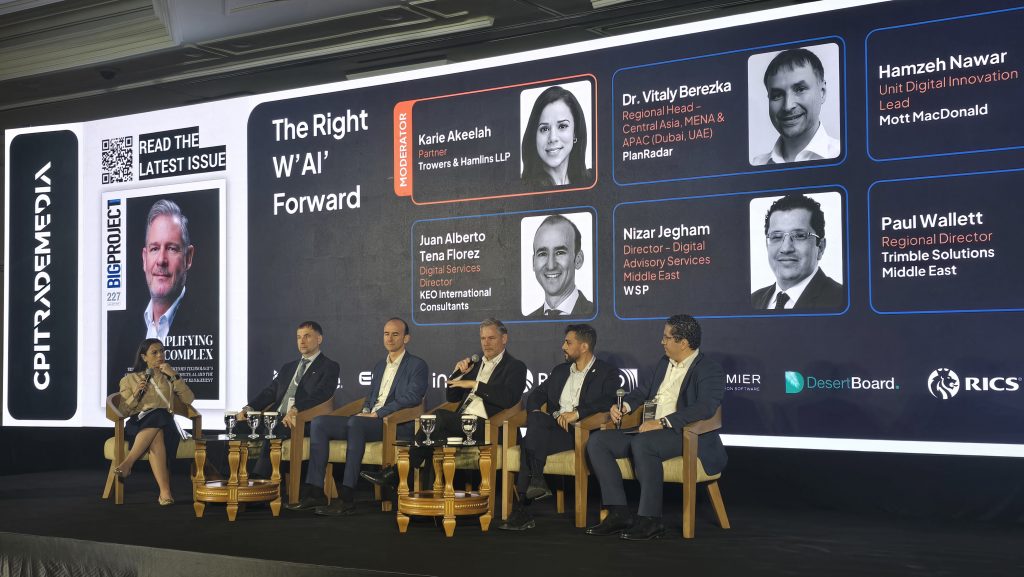Artificial intelligence (AI) is no longer a distant prospect for the construction industry. From reality capture to predictive analytics, AI promises transformative gains in safety, efficiency and productivity. Yet as panellists of the W’AI Forward at the Digital Construction Summit highlighted, the path forward is not without its challenges.
While AI can speed up repetitive or data-heavy tasks, the panel was clear that human oversight remains essential where safety and reliability are concerned. Paul Wallett, Regional Director at Trimble Solutions Middle East, pointed to tunnelling projects in the US where AI reduced analysis time from 30 minutes to just three. Yet he stressed that no contractor would — or should — let AI design or approve a structure without rigorous human verification: “If that structure collapses, it’s the contractor who is liable, not the algorithm.”
AI’s effectiveness depends on the quality of its data. Hamzeh Nawar of Mott MacDonald and Juan Alberto Tena Florez of KEO International Consultants emphasised the importance of accuracy, timeliness and governance. Many smaller stakeholders in the value chain see structured data collection as an extra burden, leading to silos and inconsistencies. Without standardisation, AI outputs risk being unreliable. As Wallett noted, “You don’t want it to be ‘kind of all right’—you need it to be accurate and sure.”
Trust emerged as a recurring theme. For Dr. Vitaly Berezka of PlanRadar, over-regulation, particularly in Europe, risks stifling innovation before AI can prove its worth. Others, like Nawar and Nizar Jegham of WSP, argued that clear internal governance—through company-level policies, contractual clauses and liability frameworks—is essential to control risks such as misuse of proprietary data, bias in algorithms, or unclear responsibility when systems fail.
AI adoption also hinges on people. Mandatory training programmes are already common in tech-driven firms, teaching staff about cybersecurity, data protection, and the risks of uploading sensitive project information into open-source platforms.
As Akhila, the panel moderator and construction lawyer, warned, firms must not only train their internal teams but also ensure external clients and contractors understand how systems work and who carries liability when things go wrong.
Despite these hurdles, the opportunities are substantial. AI is already delivering measurable gains in construction through image recognition, defect detection, predictive maintenance, and performance monitoring. With bias-aware models, improved regulation, and industry-wide data standards, AI could help contractors cut costs, reduce accidents, and complete projects faster.
As Jegham put it, the direction of travel is clear: “Employers are starting to ask contractors: what AI are you using? They have the right to know.” The industry now faces a choice—either treat AI as a compliance burden, or embrace it as a tool to build trust, transparency and efficiency into the next generation of construction.
